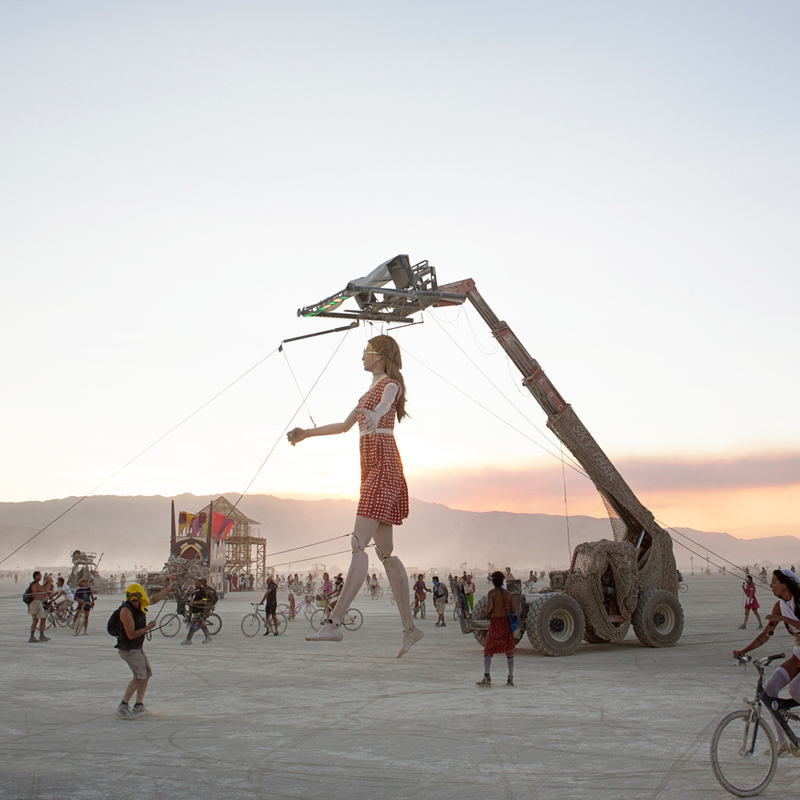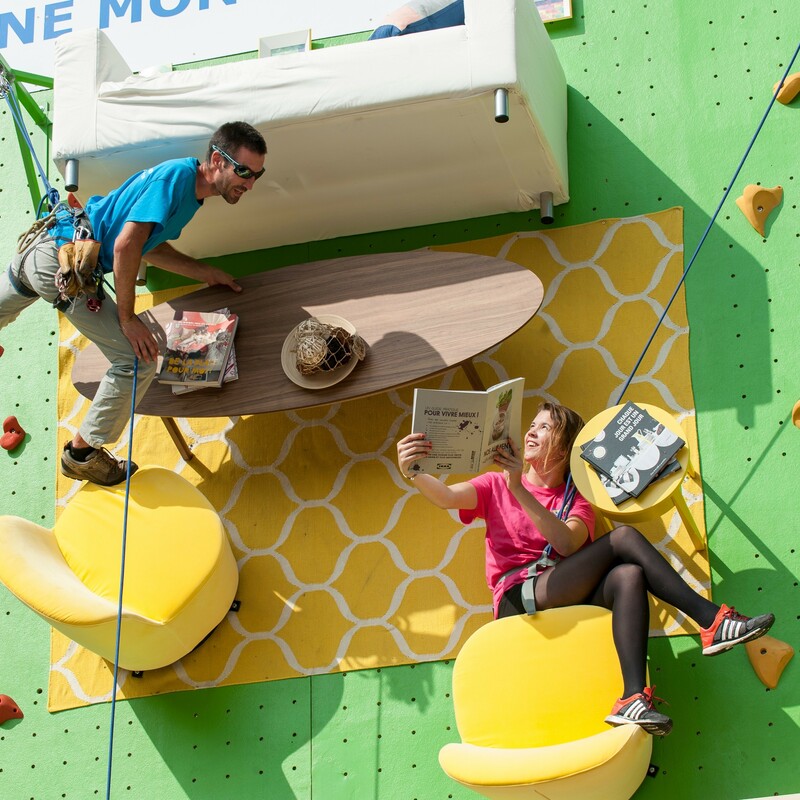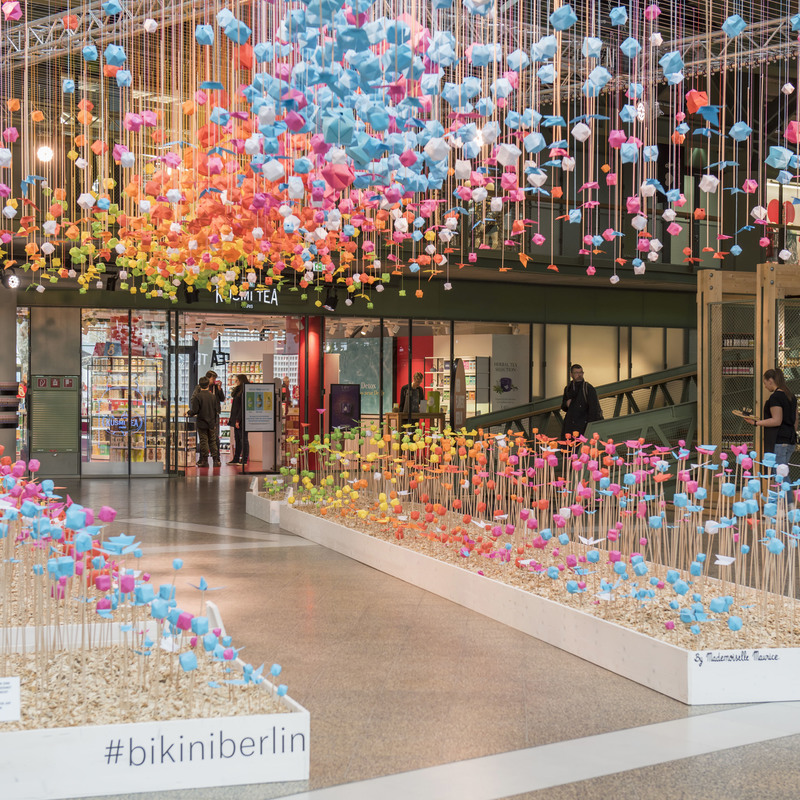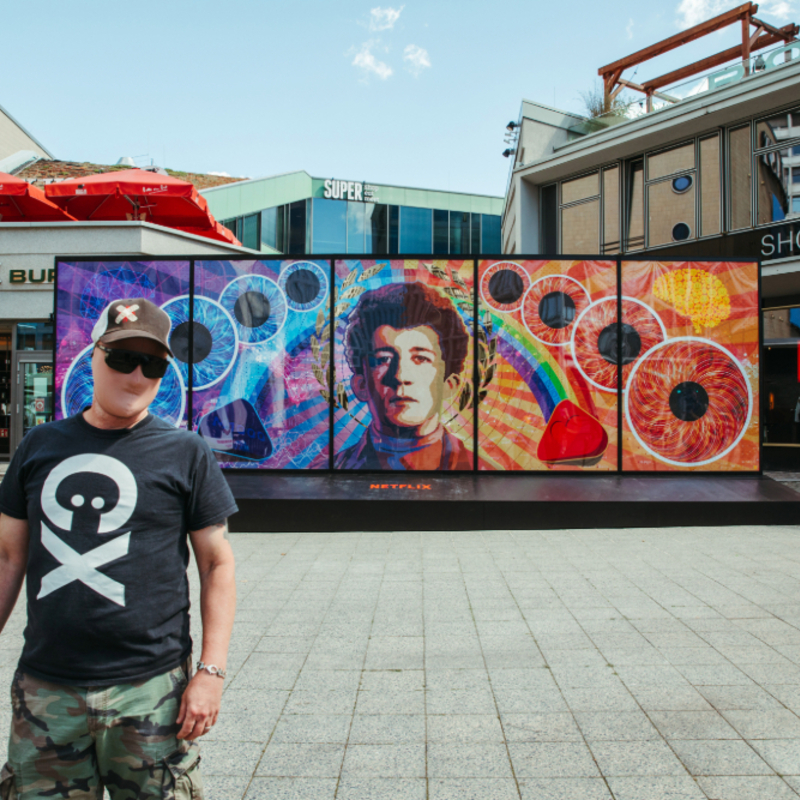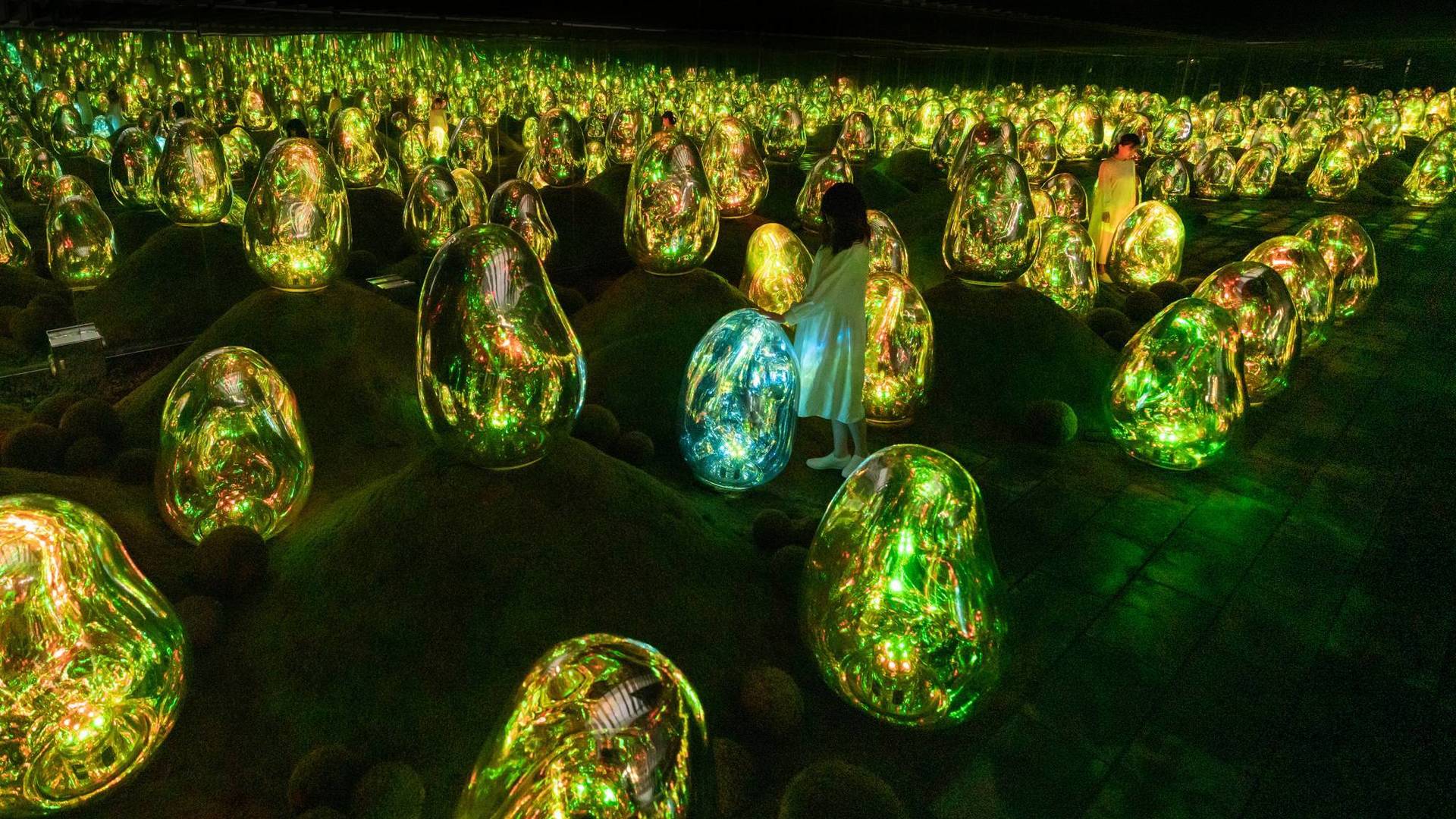
Breathtaking digital interactive installations: Reimagining public space with hi-tech art
What comes to mind when you hear about digital interactive installations? Probably art that creates some form of interaction and non-scripted play between itself and the visitor. But these installations take interactivity further: art suddenly responds to visitors' inputs and a dialogue emerges. Your presence in a space influences how the next person behaves. And just like that, the presence of others creates an enlightening experience.
Digital interactive installations, as a description, combines two terms: digital art installation and interactive installations. Let's start by looking at digital art installations that turn the computer into an artistic tool that manipulates both the real and virtual world, inviting the visitor to become part of the artwork. Some of the most gripping examples of art installations activate the physical space in an exciting way. These installations allow for different forms of interaction like touch, socialization and physical engagement. These experiences are usually created through video or 3D images and sensors that detect and respond to human movement, localizing your attention.
After using software to reconfigure a painting, sculpture or other traditional media into new forms, the real fun begins. Whether the aim is to create a fun, exhilarating experience or a deeper connection between an artwork and the audience, installation advertising will immerse you long enough to convey its message powerfully. When cameras, microphones, the internet and speakers are added into the mix, this art becomes even more enthralling. There are so many great uses of digital interactive installations; here are a few highlights.
Read more on how brands use art installations to spread a message.
A digital touch-activated greenhouse
Picture this: you're walking through a greenhouse in Tokyo, but the entire structure is covered with an LED light installation, and every plant and vegetable you touch triggers a different orchestral symphony. You realize that you have just stepped into Digital Vegetables, a brightly colored, touch-sensitive digital light installation. There are seven different vegetables flourishing in the rich soil, each enhanced by video and sounds. The sound effects are a combination of leaves touching, seeds rubbing and various orchestral instruments – sweet potatoes are pianos, carrots are trumpets, tomatoes are violins, radishes are flutes, pumpkins are clarinets and cabbages are oboes.

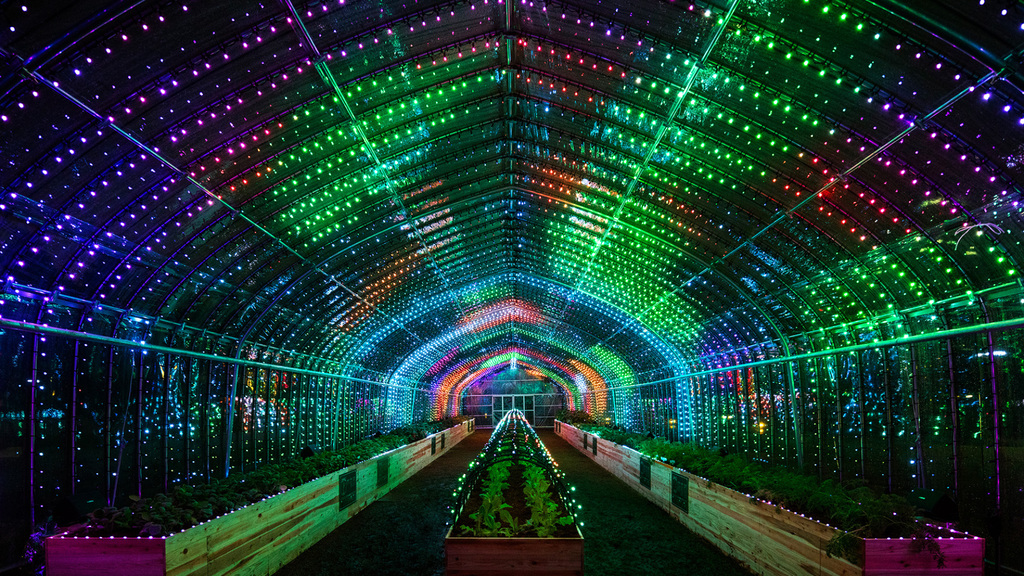
This ingenious digital interactive installation is the masterpiece of studio PARTY, set up to create an interactive experience that appeals to all our senses, as visitors are beckoned to smell, touch and listen to the plants growing around them. The aim behind the design was to encourage a conversation about agriculture and sustainable food systems in a stimulating way that doesn’t bog people down with complex information but instead celebrates the science, art and business behind agriculture in a built environment.
Hi-tech experience in an abandoned bowling alley
A key feature of digital interactive installations is that the viewer is anything but a passive onlooker. Visiting House of Eternal Return by Meow Wolf, an abandoned bowling alley in Sante Fe, New Mexico, is like playing a live strategy and role-playing game that involves solving a mystery, very much like the computer game Layers of Fear. The mystery revolves around the Selig family, an artist, husband and son, and their sudden disappearance in their Victorian styled home – the one that you now find yourself in. Your role is to move through this nonlinear installation and use each scene to find out what happened to them.

It’s a 2000-square-foot space that was bought by George RR Martin, the creator of Game of Thrones, with the aim of building an eerie fantasy world which visitors can interact however they please. One minute you’re walking and the next you’re crawling or playing as you move through the house. The only way to really solve the mystery is to use your instincts and imagination and touch everything. What makes the installation really fun is how the artists have used digital technology to confuse time and space. Familiar objects and exits in the home become portals and visitors either get closer to solving the mystery or find they’ve taken a few steps backwards.
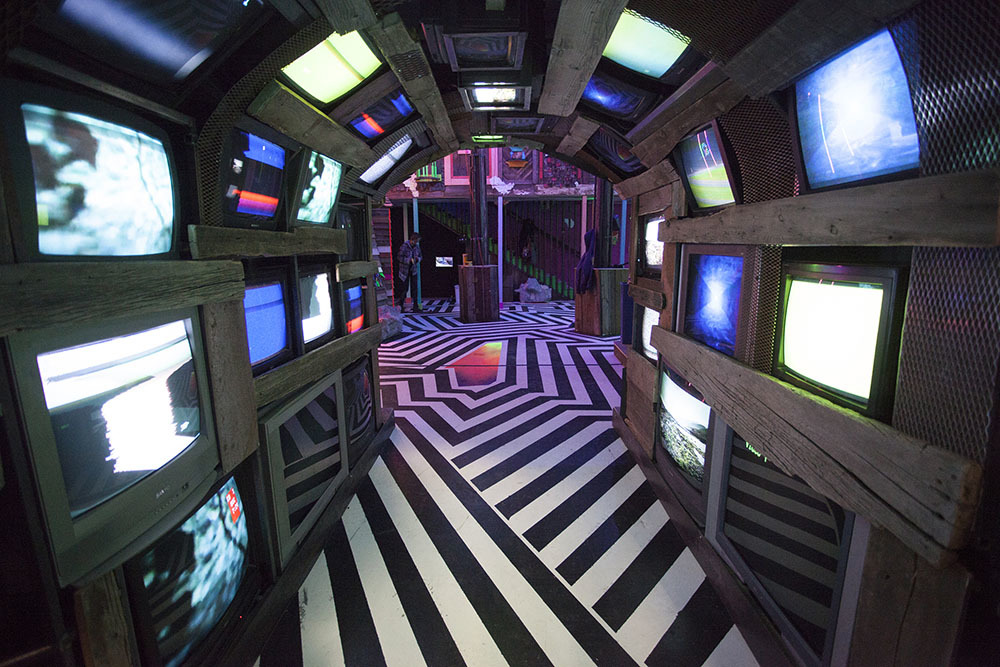
PORTAL: Digital interactive installations that unite people
If we encounter a portal, it’s usually in a movie or in our dreams, but in Lithuania and Poland, sci-fi fans can find a circular window with some very special powers. What do you see when looking through a portal? In this case, a wormhole into another city hundreds of miles away, where people are walking in real time. The Stargate-like creation of the PORTAL project used the internet and huge video screens to connect people 600 kilometers away and spark the excitement of encountering new places and people at a time when – due to the COVID-19 pandemic – travel had been stopped.
.jpg)

It’s a way of closing the distance between people from different geographical backgrounds, but who face the same global issues. The portal conveys the illusion of looking into a mirror – only you’re not seeing yourself. The installation intentionally speaks to the separation of people by national borders, and how we need to come together. Using live-feed cameras, 3D modelling, real dimensions, and digital content development, this is one of the first digital interactive installations of its kind.
See other types of art installations.
See other types of art installations.
Bordeaux WWII submarine base turned digital art center
Installation art may be a contemporary artistic genre, however its versatility lies in its ability to offer us a visual lens and a new way to comprehend our social realities in the present and the future as well as the past. This is not the first time art has been used to understand the past, but it is the first time that a German World War two submarine bunker in the docks of Bordeaux has been turned into the largest underground digital and cultural center by Culturespaces.
Built in the early 1940s, the bunker is now home to the Les Bassins de Lumieres (the Ponds of Lights), where the work by painter Gustav Klimt, Paul Klee and Monet can be seen. Visitors can now immerse themselves in the permanent exhibition space, which showcases projections of influential artworks and spectacular representations of Cubism, Surrealism and Expressionism. As viewers walk through the passageways of the 40-foot-deep basins, each about 360 feet long, they’re surrounded by artworks that reflect off the water and slither onto the walls. With six different areas, there is so much to learn from being in this space, not only about tech-art installations but about the bunker's history and the repurposing of historic structures.
Digital art is a lens into the past, present, and future
From abandoned bowling alleys and LED greenhouses to portals and historic World War II submarine bases, digital interactive installations can turn any public space into a reimagined world, a utopian or dystopian reality and take people on a journey through time and space. What’s great about this artistic genre is its fluidity: it lies on the peripheries of creative mediums and pulls from each of them. You will know when you’ve just stepped into a digital interactive installation, as everything around you won’t necessarily change, but will rather be enhanced on multiple levels.
How long before we can actually step through the portal?
Related creative stories
Browse through other features, interviews and guides to discover creative brand collaborations, meet innovative artists and creators, find out how new artforms are energizing advertising, & more.
Send us your briefing
We're excited to hear from you! If you're looking for artistic solutions for your next creative marketing campaign, send us your briefing. We can also help create a killer concept if you're in an early ideation phase. Check out our services for more.


